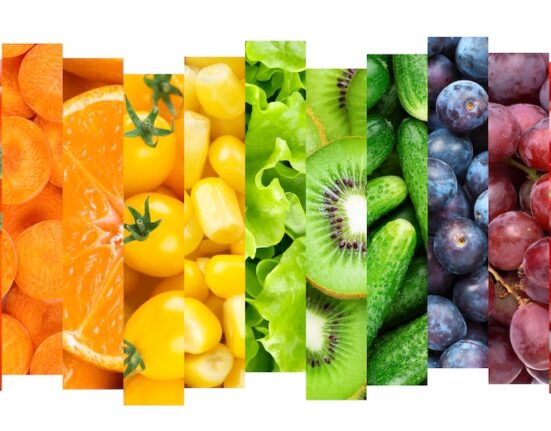On a damp winter morning on the Isle of Capri—an island in Italy’s Bay of Naples—the winds swept through Villa Jovis as the Roman Emperor Tiberius rose from his bed. The Emperor was in poor health and had been for some time after an unfortunate javelin throw wrenched his shoulder. He was hungry and craved his favorite vegetable: Cucumis melo, or what we may call today a snake melon. Reluctant to brave the winter weather himself, Tiberius summoned his servants to fetch the coveted vegetable and bring it to him in bed.
One of the servants hurried across the vast estate to the site where several snake melons were ripe for picking. The servant selected and harvested a few of the melons and returned in haste back to the Emperor. With the fruit finally in hand, Tiberius felt a sense of relief. As Pliny the Elder noted in his Historia Naturalis, “there was never a day on which he was not supplied with it.”
This story, while seemingly trivial, raises an intriguing question: how was it that a vegetable as delicate as the snake melon could be available to the Roman Emperor throughout the year, even in the dead of winter? The answer lies in an innovation adjacent to the palace known as the specularia, often considered by historians as the first greenhouse.
Yet, this was no greenhouse as we would recognize it today. Built around 30 BC, as Pliny recounts, the specularia “consisted of beds mounted on wheels which they moved out into the sun and then on wintry days withdrew under the cover of frames glazed with transparent stone.” This translucent stone, likely selenite, a crystalline variety of gypsum, allowed sunlight to enter while trapping heat inside, an early precursor to contemporary greenhouse technology. This inventive solution, driven by the Roman Emperor’s desire for a specific vegetable, paved the way for today’s modern greenhouses.
As centuries passed and ideas flowed between East and West, the greenhouse evolved with each culture it encountered. A significant breakthrough occurred in 15th-century Korea, a discovery only recently uncovered by historians in 2001. A 1459 Korean cookbook, Sanga Yorok, written by the Korean Royal family’s doctor, Jeon Soon, provides a detailed description of how to build a structure like the Roman design but with a distinctly Korean twist. Instead of translucent stone, the Koreans used oiled hanji, a traditional handmade Korean paper, delicate yet effective for letting light in and trapping heat.
But the true innovation was the integration of the ondol system, an ancient Korean underfloor heating technique. A furnace at one end of the structure generated warm air that circulated beneath the floor, warming the garden beds, while a chimney at the other end vented the air. Additionally, the structure called for a cauldron filled with water to be heated to create steam, which along with increasing temperature, increased humidity. This design allowed precise control of light, temperature, and humidity—a precursor to the highly controlled environments of modern agricultural systems. With this system, the Korean royal family was able to grow citrus in the dead of winter, a luxury that mirrored the desires of distant emperors.
A few decades after the Sanga Yorok was penned, a Genoese mariner departed Castile on a voyage across the Atlantic Ocean that would alter the course of history. That mariner, of course, was Christopher Columbus. While Columbus himself didn’t contribute directly to greenhouse technology, his expeditions, and those that followed, brought back to Europe a treasure trove of exotic fruits, among them pineapples and citrus, which ignited a frenzy among the European elite. The desire to cultivate these new delicacies in the temperate climates of Europe spurred a renaissance in greenhouse construction. Advancements in glass and metal techniques, led to more experimentation and increasingly elaborate greenhouses, particularly in England, the Netherlands and France.
Among the most iconic greenhouses of this era was the one constructed at the Palace of Versailles in 1661 commissioned by French King Louis XIV. Known for his love of citrus, he had a greenhouse built that was more than 490 feet long, 43 feet wide, and 46 feet high to house his beloved citrus plants. But King Louis XIV didn’t refer to this structure as a greenhouse—to him it was an orangerie.
The 19th century saw greenhouses become symbols of affluence and scientific curiosity, accessible mainly to the wealthy and institutions until the Industrial Revolution democratized their use. The rise of industry led to reduced costs for producing materials such as glass and metal. With increasing affordability and a growing middle class, greenhouses were being constructed seemingly everywhere in varying sizes. In Britain, in particular, the craze for greenhouses became a symbol of both personal success and national pride, with imperial gardens showcasing exotic plants from the far reaches of the British Empire. The Palm House at Kew Gardens, constructed in 1848, stands as a grand example of this era, a shimmering cathedral of glass and iron dedicated to the botanical wonders of the empire.
Entering the 20th century, greenhouses continued to evolve. Structurally, aluminum, less prone to rust and lighter than iron or steel, became the material of choice for frames. When the Second World War broke out, greenhouses experienced yet another innovation shock. With Allied forces stationed in remote regions across the world, securing a steady food supply became a pressing concern, often necessitating the cultivation of crops in hostile environments. Many of these locales had unsuitable soil for traditional farming, leading the military to revive an ancient technique: hydroponics. Although hydroponic methods had long been known, it was during the war that they saw a resurgence and were adapted for use in greenhouses, which had previously relied on soil-based systems.
In the post-war world, a new era of technological innovation swept across agriculture. The 1960s saw the advent of polyethylene film as a substitute for glass, and PVC pipes began to replace metal frames, making greenhouses more accessible than ever before. Now, even the smallest farmers could afford to erect a simple greenhouse. Innovations in climate control, such as solar power and advanced ventilation systems, further refined the art of controlled environment agriculture, ensuring that greenhouses could be used by everyone, from large-scale commercial growers to backyard enthusiasts.
And so, the greenhouse—a structure that began as a luxury for emperors and kings—has become an essential tool in the quest to feed a growing global population. Heraclitus, the Greek philosopher, once remarked that “the only constant in life is change,” and so it is with the greenhouse. From its humble beginnings on the Isle of Capri to the sophisticated structures of today, the greenhouse has been a vehicle for change, constantly evolving to meet the needs of those who seek to harness nature’s bounty.
As we face the challenges of a changing climate and a burgeoning population, the question that looms large is what role greenhouses will play in the future of agriculture. Will they become the cornerstone of our efforts to secure a sustainable food supply, or will new innovations once again redefine the way we grow our food? Only time will tell, but the legacy of the greenhouse is certain to endure, a testament to human ingenuity and our relentless pursuit of progress.
- John Paap is the Sustainability and Brand Marketing Manager at Jac. Vandenberg, Inc. and co-host of the “History of Fresh Produce” series on The Produce Industry Podcast.





